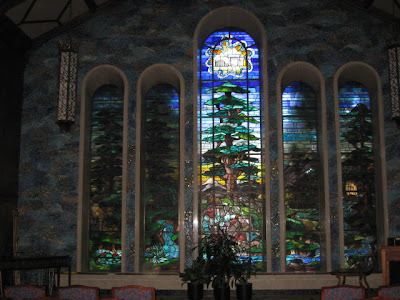
As my title states, this will be my final class reflection on Spring Grove; but it will not be the final reflection on Spring Grove. And, I have numerous photos that I am editing and organizing and I will be posting them. Through this class, I have been introduced to a whole new dimension of Spring Grove and a view of life from a different angle.
A cemetery can be many things: a burial ground where the dead are buried awaiting the coming of the Messiah (if you are Jewish) or the second coming of Christ (if you are Christian); a place of remembrance for loved ones who have died; a monument to how the deceased is remembered or wanted to be remembered; a beautiful landscape or garden to uplift the spirits of the living; a visible reminder of the history of a place or a group of people; and depending on the day, it can be many other things as well. Spring Grove, for example, is not just a memorial garden to the dead; it is a great place to get fit by walking (with ever changing scenery as you walk), a park (though with a lot of rules of behavior – and don’t disturb the geese), an arboretum (where you can see and touch and smell woody plants in a natural setting, not in a pot), a garden with grand seasonal floral displays, an outdoor art museum, an architectural and historical palate and it is free for us to enjoy.
Many cemeteries seem to just be places to plant the dead, get the body off the surface of the earth as required by law, and forget about it. The property is barely maintained and nearly forgotten until the next burial.
Others are memory gardens. My brother-in-law was born and raised in a small town in southeastern Indiana. Families still place (silk) flowers on all their family gravesites several times a year, so there is always something displayed that shows that someone remembers. They don’t have to trim around the graves anymore, the cemetery does that, but they still make sure that those who have joined the Church Triumphant are remembered. (I think some people obsess about it and try to have a better display than “the Jones”, but that’s my opinion.)
Some are the focus of area history. The Lebanon (Ohio) Pioneer Cemetery is preserved and visited by primary and middle school scholars as part of their local and state history requirements. It is about two blocks from the “new” Lebanon Cemetery, which is in the “new” garden style with curving roads and strategic plantings and nice shade trees. It is also part of the history fieldtrips as it was organized in the 1850’s
Having time to explore the different areas and aspects of Spring Grove and having the time to absorb the experiences has been wonderful. Our first walkabout with our assigned sections to explore in detail gave us something small enough to comprehend and a good basis for further explorations. My partners and I chose to walk to our assigned sections, 45 and 46. Climbing the hill up the white line on foot gave us, I think, a better perspective of place than driving. It also gave us a chance to absorb the early evening atmosphere – the decreasing light filtering through the trees, the quiet of the evening, the somber effect of the drooping, leaning foliage. Further walkabouts built upon those first night impressions.
The family histories that can be read from the grave markers and the stories that are told by the iconography on the monuments are some of the best things that I will take away from this class. I see cemeteries as places for the living. I don’t believe that the dead are there in the ground; what is left after death is an empty shell that reminds us of the living person that we remember. The ritual of a burial service and the ritual of interment are to comfort the living. I believe that God really does sort it all out. The things we do here for our deceased loved one are to take care of those of us who have yet to join the Choir Invisible. Societal rituals are very important. They allow public expressions of grief, of hope, of remembrance and socially approved means of honoring the dead and allow us to say goodbye…for a time.
The founders of Spring Grove were wise men. They and their succeeding directors have created a landscape that transcends a mere burial ground. I think you’d have to have the heart of stone not to feel better for walking Spring Grove. There is spiritual healing that can come from being outside in nature, if we are open to the experience. These early Cincinnatians were opening the way for all Cincinnati citizens to have that experience. And I’m very glad that they did.


No comments:
Post a Comment